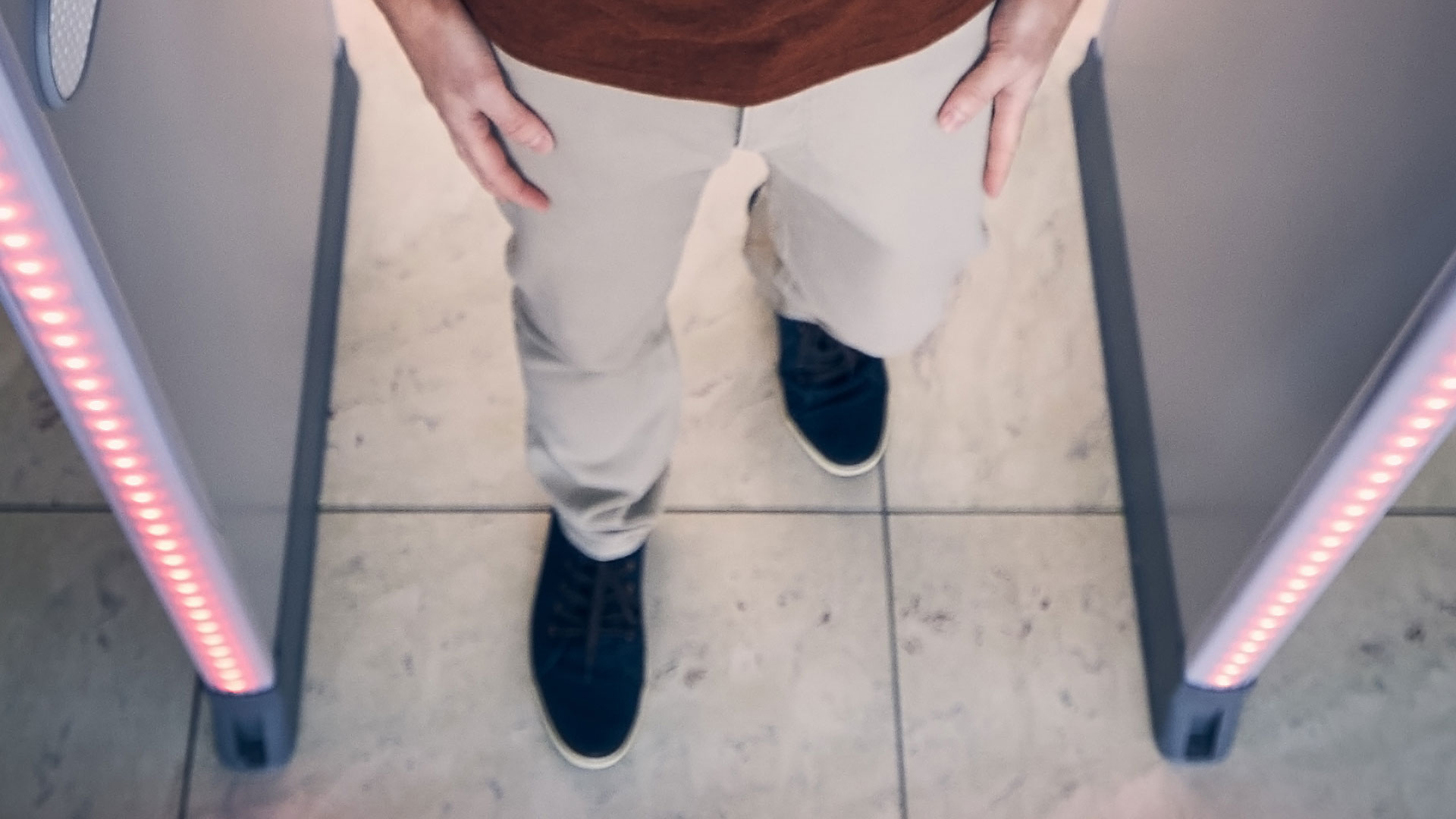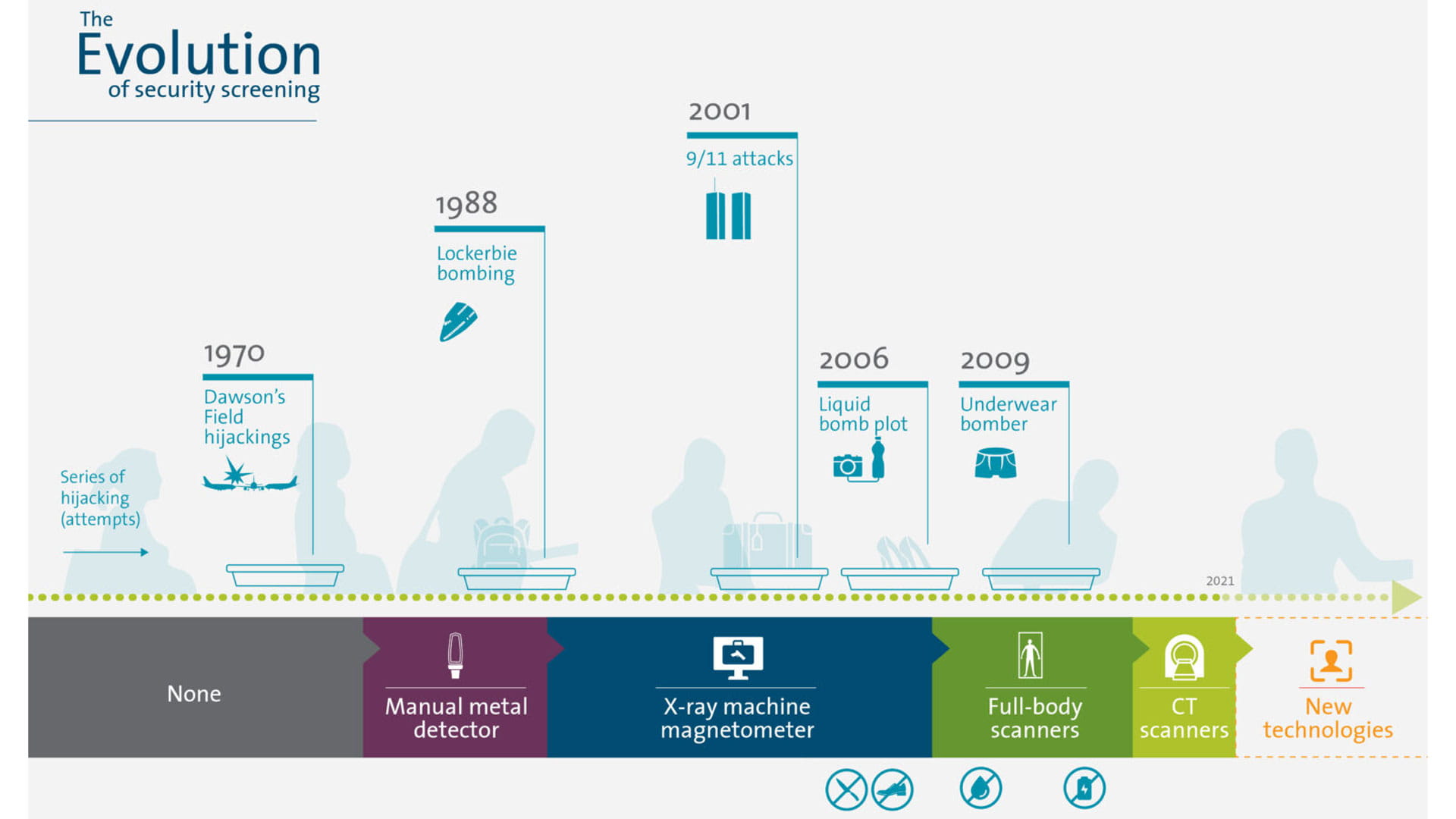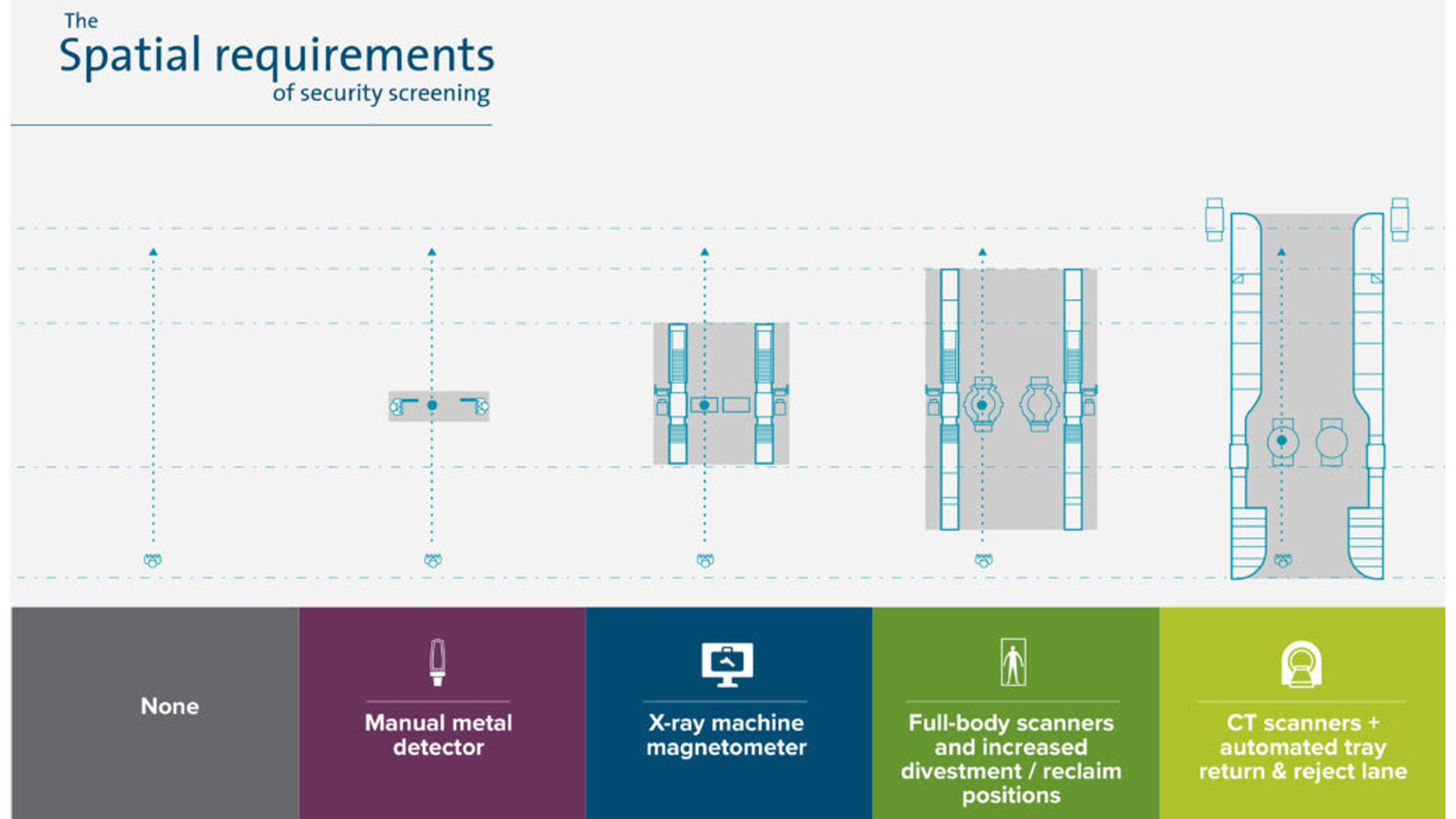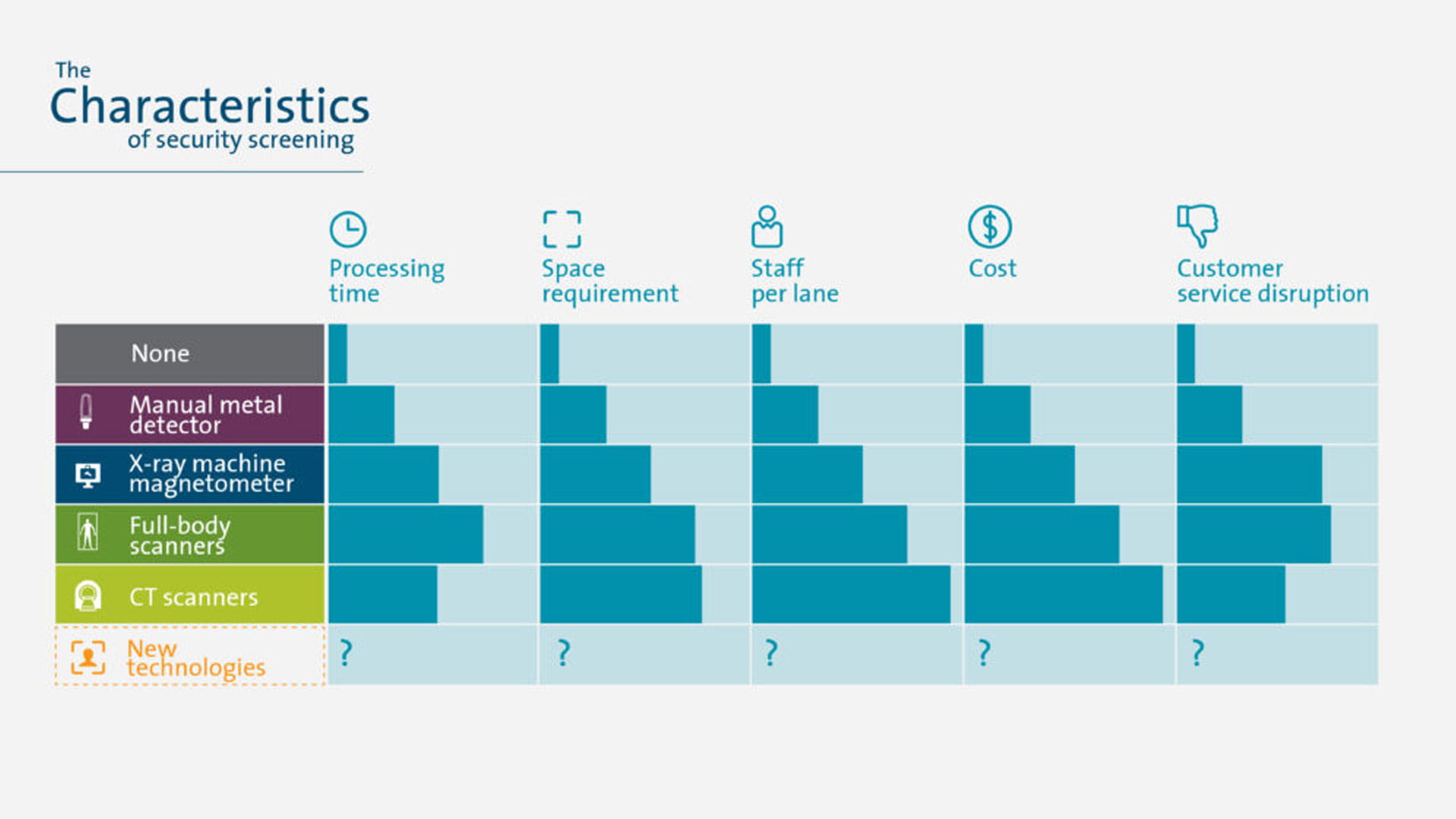The Evolution of Passenger Screening


Rethinking the Process
Passenger screening and security checks are a familiar aspect of air travel – but the ways in which passengers are screened has changed over the years, from simple x-ray systems, to the more complex and sophisticated systems we see today. These changes have often been driven by historical development and events, as well as improvements in technology. The current Covid-19 pandemic is forcing airports, airlines, governments, consultants, and suppliers to reflect on how to react to changing health requirements in aviation and airport operations.Evolving Aviation Security
Security checkpoints in airports have been around for over 50 years since their introduction in the early 1970s, following a series of airplane hijackings. Over the last 20 years, security screening processes have developed from traditional x-ray systems and walk-through-metal-detectors, to automated security lanes for cabin baggage handling, and security scanners for passengers. While the throughput is similar to that of 20 years ago, the threat detection algorithms and the number of possible threats handled today are significantly more challenging and complex.Alongside technological developments, both operational and spatial considerations are key drivers in the evolution of the security checkpoint – and significant efforts have been made to meet the demand for passenger-friendly processes that can maintain the pace of traffic growth. Checkpoints need to strike the right balance of providing a swift interaction while maintaining a growing security level and keeping employees and the travelling public safe.
The impact has been noticeable in the complexity of the security protocols (e.g. requirements to divest), the time required to complete all sub-processes, the cost of the infrastructure, and the number of staff required to operate them. However the biggest increase is in the required floor space needed for these security checkpoints, which are often positioned in the middle of a terminal building with all the challenges that brings.

CT Scanners and how Crises Create Change
The recent deployment of Computed Tomography (CT) scanners for cabin baggage screening brings multiple benefits to the passenger screening process. If implemented correctly, CT scanners increase the security lane throughput, facilitate the lift of the LAG (Liquid, Aerosol, and Gel) restrictions and remove the need for passengers to unpack large electronics and LAGs. This allows most cabin baggage to be placed directly in a tray without the need to remove items, which requires less trays to scan items, resulting in a faster processing and higher security lane throughput.A bomb plot in Australia in 2017 led the Australian Government to mandate the use of CT scanners at passenger checkpoints at major airports by 2020 (currently delayed due to the pandemic). Many other countries have followed with the introduction of similar mandates, so could the Covid-19 pandemic be a similar crisis event that requires measures that ultimately will deliver an increased level of service and a seamless journey to passengers?
The Covid-19 Opportunity for Passenger Screening
Covid-19 has shaken up a lot of industries, none more so than aviation and security. The pandemic has accelerated pre-existing trends towards automation, self-service and now the importance of health security means there is an increased need for touchless technology, to reduce the risk of transmission. This is all on top of the desire to make operations less dependent on resources and more flexible to meet both demand and new operating protocols.These trends, however, are harder to implement in the passenger screening checkpoint, where the process relies on interactions between passengers, their belongings, and security agents; and where unpredictable demand and inadequate staffing often result in long queues.
In the face of this, it is clear to see that operational flexibility, stakeholder collaboration and technological readiness all play an increasingly important role – but what measures, technologies or solutions could an airport consider implementing to create a more sustainable and cost-efficient security checkpoint?

Authors
- René Hopstaken, Anna Fantoni, Alisa Silven, Wahyu Hariyono, Patrick Lo-A-Njoe and Gerard van der Veer of NACO
- Paul van Gaalen, Robin van Gemert and Gunther van Adrichem of Point.FWD